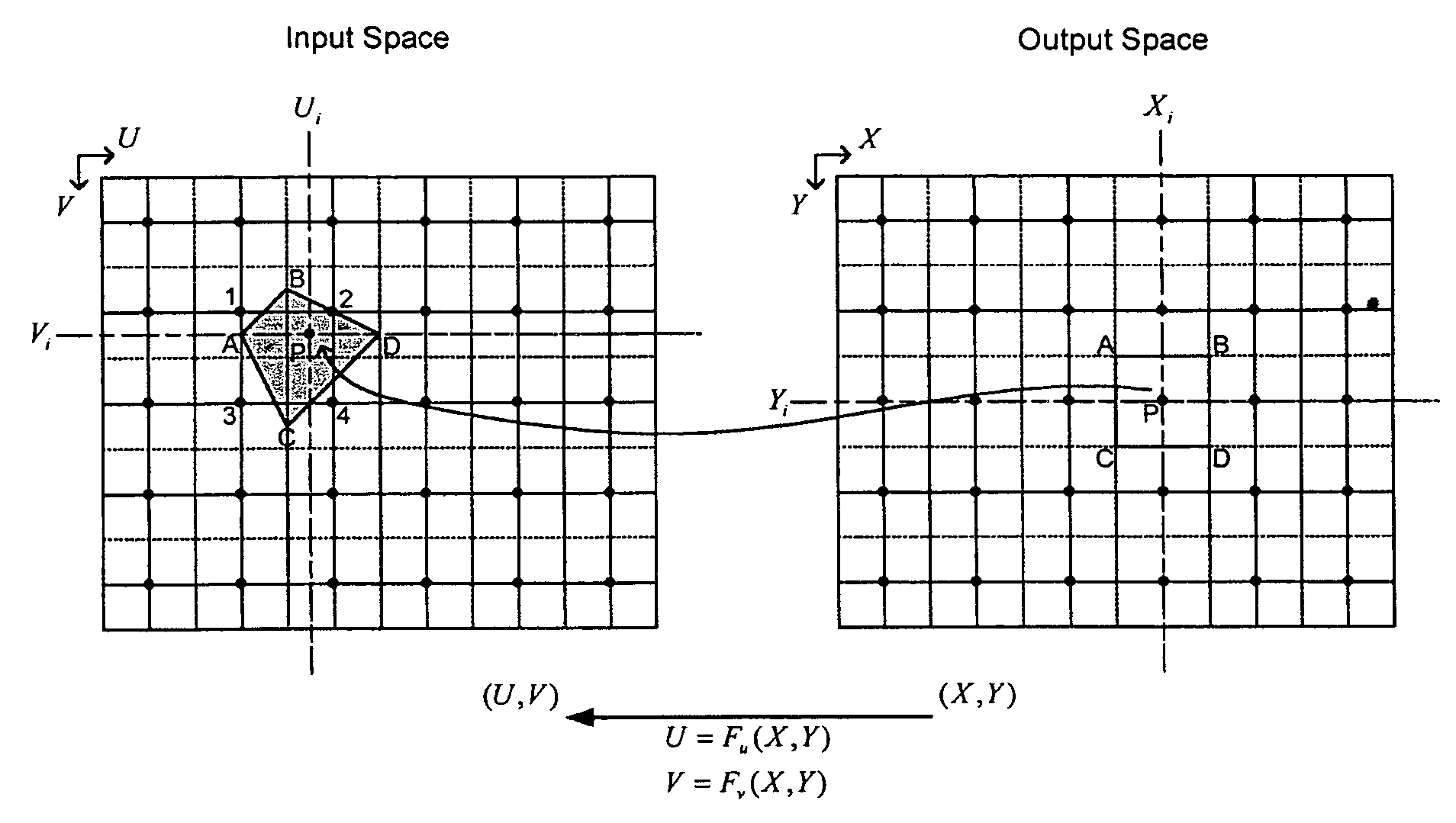System and method for representing a general two dimensional spatial transformation
a two-dimensional spatial transformation and general technology, applied in the field of digital image data transformation, can solve the problems of incomplete data loss, restricting the complexity of spatial transformation or unrealistic descriptions of transformation, and affecting the accuracy of spatial transformation results
- Summary
- Abstract
- Description
- Claims
- Application Information
AI Technical Summary
Benefits of technology
Problems solved by technology
Method used
Image
Examples
Embodiment Construction
[0027]Reference is first made to FIG. 1 which shows an example of a warp system 100 made in accordance with a preferred embodiment of the present invention. Warp system 100 includes a geometry input interface 110, a grid transformation generator 120, a patch geometry generator 130, a surface function estimator 140, an error analysis stage 150, a bounding box generator 160, a resolution / zoom generator 170, a data rearrange stage 180, and an output interface 190.
[0028]Warp system 100 transforms a grid data (pixel-by-pixel) representation to a surface functional representation, which results in an efficient real-time hardware implementation. Any system where a 2D spatial transformation needs to be applied can make use of warp system 100. Warp system 100 can be used in applications ranging from correcting small distortions in projectors, cameras, and display devices, to correcting for perspectives like keystone or special wide-angle lens corrections, and to a complete change in image ge...
PUM
 Login to View More
Login to View More Abstract
Description
Claims
Application Information
 Login to View More
Login to View More - R&D
- Intellectual Property
- Life Sciences
- Materials
- Tech Scout
- Unparalleled Data Quality
- Higher Quality Content
- 60% Fewer Hallucinations
Browse by: Latest US Patents, China's latest patents, Technical Efficacy Thesaurus, Application Domain, Technology Topic, Popular Technical Reports.
© 2025 PatSnap. All rights reserved.Legal|Privacy policy|Modern Slavery Act Transparency Statement|Sitemap|About US| Contact US: help@patsnap.com



